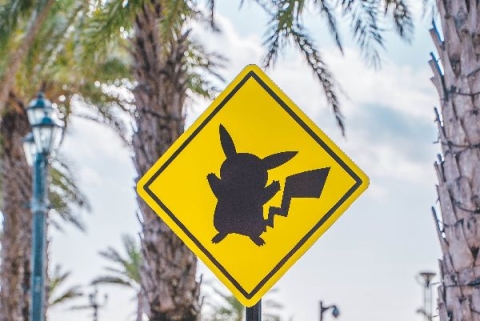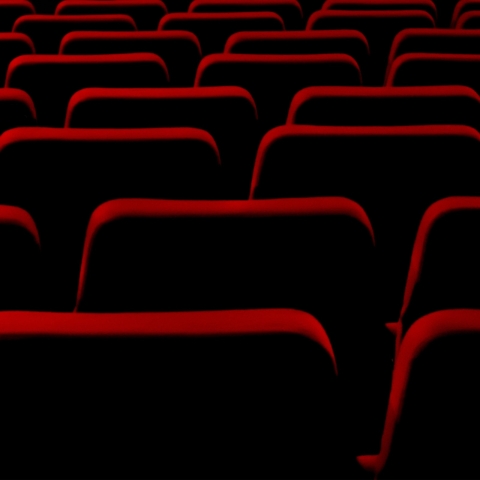

Ash Ketchum is retiring from the Pokémon franchise, but this doesn’t spell the end of Pikachu.
In the run-up to Pokémon Day – an anniversary created to celebrate the first Pokémon video game, released on February 27 1996 – a small but significant piece of news was announced.
There is to be a new Pikachu character, named Captain Pikachu. This Pikachu will partner with a new human, Professor Friede, in an animated series based on the most recent video game: Pokémon Scarlet and Violet.
The pokémon has been a global marketing tool for Nintendo products for over 25 years. Fans are used to seeing Pikachu dressed in all manner of outfits, including 2019’s Detective Pikachu.
However, the announcement followed a seismic shift in the animated franchise. Pikachu’s longtime child partner, Ash, finally achieved his goal of becoming a Pokémon Champion at the end of 2022. As a result, the Pokémon Company confirmed that the character would bow out of the television series in early 2023.
In response, fans on the social media platform Reddit asked what would happen to Pikachu. How could he possibly continue without Ash in future stories?
Without the iconic character, Nintendo would lose more than just an important piece of intellectual property – they would lose the heart of what makes the franchise so endearing, so it’s no surprise to see Pikachu’s return, albeit in a different guise.
Why is Pikachu so popular?
Pikachu was not necessarily destined for great popularity. He was not a standout “pocket monster” in Nintendo’s first Game Boy Pokémon title, Red and Green, but was one among 151 creatures that children could choose to play with.
The Pokémon video game was quickly followed by the trading card game in October 1996, where players could pick from a range of cards to battle or trade with a friend.
Early audiences were entirely domestic as the game was not available outside Japan. However, when Kubo Masakazu, a comic book publisher and manga enthusiast, was hired by Nintendo to take Pokémon beyond the national market, he immediately saw the potential to build a global franchise and audience around one character: Pikachu.
Masakazu developed the animated television series and movies, focusing the stories on a trio of young travellers – Ash, Misty and Brock. Each traveller had a partner pokémon that would never be tucked away in a pokéball (devices in which pokémon are captured and stored), with personalities of their own.
As author Anne Allison described in Millennial Monsters (2006), this new empire of entertainment (games, trading cards, a TV show and films) was based on Masakazu’s vision of harmony. This was shown in the way humans and pocket monsters live side by side, treating each other with kindness and love. The bond between Ash and Pikachu is at the heart of Pokémon’s global success.
Kawaii, or cuteness, is a profitable Japanese cultural export and the Pikachu character personifies its success. Pikachu’s appeal lies in the character’s design, backed up by his emotional resonance, which is developed in the animated series and films.
Pikachu’s colour and frame are easily recognisable and can be redrawn in any style. The name is catchy and repeatable, whether or not you are a native Japanese speaker. The character is small and huggable and helps children develop feelings of attachment, nurturance and intimacy when they play with Pikachu toys.
These visual features are reinforced by Pikachu’s personality and powers. He is loyal to Ash, brave in front of countless challenges and conveys emotions openly through facial expressions, noises and constant affirmation of who he is: “Pika, Pika, Pikachu!”
Famously, in the animated series, Ash’s Pikachu does not wish to evolve (the process through which a pokémon can change form, grow stronger and gain new abilities). This goes against the internal logic of the game where players must care for and evolve their pokémon to help them win more battles.
Therefore, Pikachu’s strength comes from his individual identity as the Pikachu, not a Pikachu. Ash’s Pikachu is unique. So while countless others have been encountered in the games and animated series, they are not the same as his Pikachu. Or, more importantly, they are not the same as our Pikachu.
The multiplicity of the character – that he is both the same as and different from other versions in the same entertainment universe – allows Pokémon to create new stories and scenarios without disrupting the overall backstory or inherent qualities of the Pikachu character.
This is how Pikachu has managed to be both the image of a global corporate brand and a distinctly familiar and individual partner on Ash’s journey. The children who grew up watching his adventures with Ash are now adults who can still reconnect with him because their relationship with the character was developed over multiple games, TV series and films.
Now that Ash is retiring, our Pikachu can too. His memory will continue in the minds of multi-generational fans while the kawaii Nintendo still wants to export will continue through the familiar design and distinct new personality of his successor: Captain Pikachu.
Professor Lincoln Geraghty is a Professor of Media Cultures with School of Film, Media and Communication in the Faculty of Creative and Cultural Industries (CCI) .
This article is republished from The Conversation under a Creative Commons Licence. Read the original article.
More The Conversation Articles...
The Conversation is an independent source of news analysis and informed comment written by academic experts, working with professional journalists who help share their knowledge with the world.
Microsoft signs 10-year contract to bring Xbox games to Nintendo – here’s what that means for players
Travis Ralph-Donaldson
28 February 2023
4 min read

The Last of Us: HBO’s adaptation elevates the video game’s themes of love and family
27 January 2023
5 min read

Titanic at 25: how James Cameron captured 1990s anxieties with pure golden-age Hollywood style
22 December 2022
4 min read

